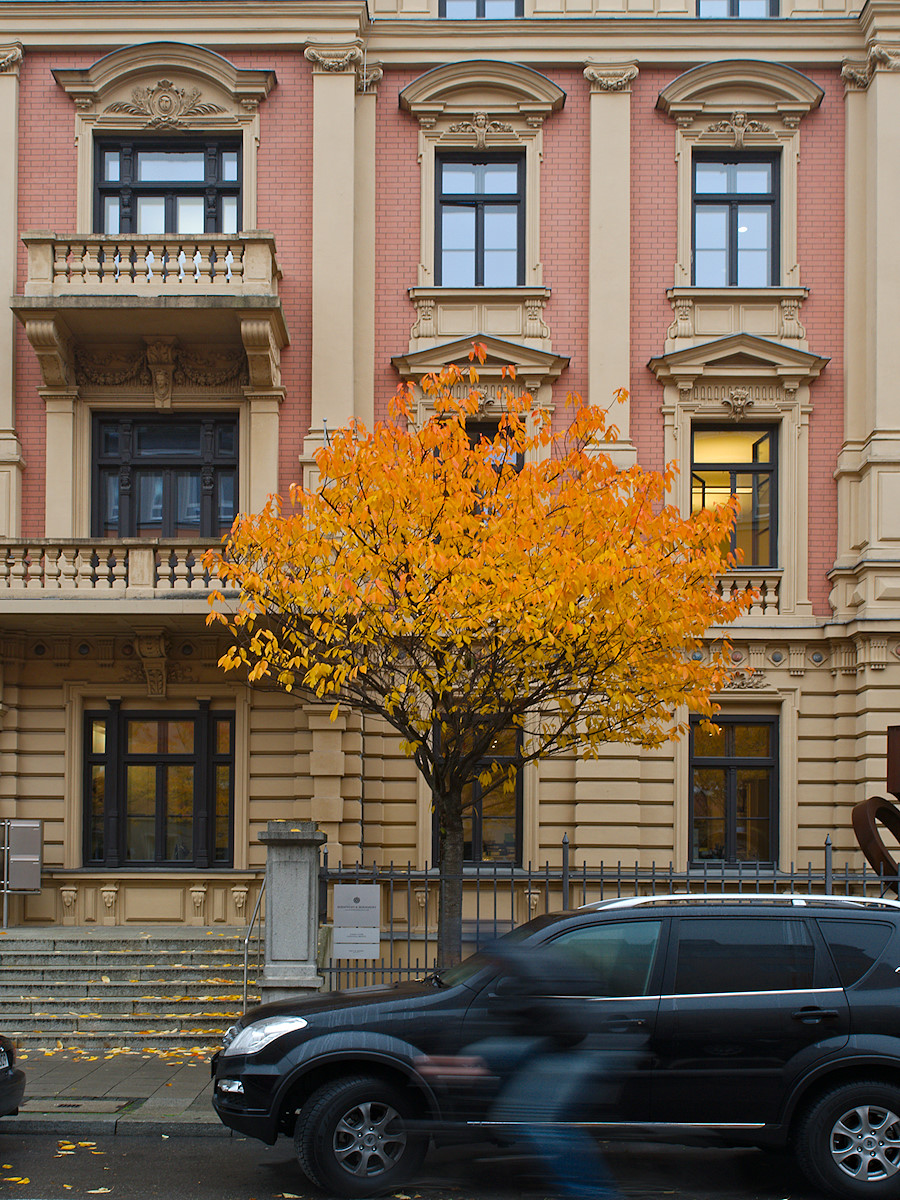
Today I helped a retiring friend, photographer by profession, to clear his office. His collection of negatives struck me with awe, also the amount of work it took to file all his images – and the space they take. A historian friend of his will go through all these photographs (plus those of his father in law) and extract what deems him worthy to be added to the collection of our city. His point of view will be completely different from mine – uniqueness of vision, composition, those visual things will be completely uninteresting, instead he will focus on places and people. I can only hope for a small intersecting set between those aspects, and then maybe not only important but also visually interesting images will get new exposure.
I like the blur in the photograph. The view of a historian on photographs is certainly different from a photographer’s. I wonder how many photographic masterpieces would have survived if the collections had been curated by historians, not by people interested in the art of photography. Even though there is overlap.
What strikes me as somewhat important, Juha, is that in that case, too, images get a sudden importance: In a mechanism quite similar to the discovery of the photographs of Vivian Meier, images of a very restricted significance (no viewers interested) get a sudden meaning which goes beyond the subject-photographer relationship. In both cases this was not foreseen at the moment when the shutter clicked, but develops much later. It is an option, but only as long as the pictures are not lost (And yesterday, I did throw away quite a number…)
Vivian Meier is a good example of the role of a curator. Another is Jacques Henri Lartigue, and the role of John Szarkowski at MoMA. Sometimes it comes to mind to speculate on the role of the photographer, the curator, and the viewer, and what happens to the photographs of masters when layers and layers of interpretation are piled on their works. It is wonderful that at least some of the photographic work is saved for future generations, but I feel that photographs have a rare capability to gain meanings/interpretations perhaps not originally intended.
A lot of vernacular photography is almost a treasure trove because of the absence of creative will on the side of the photographer. Combine that with some art photography that still reveals a lot in minor details, and you can distill a big amount of knowledge about an epoch and a society. But it most often needs more than only the view of the author-photographer on the pictures to explore all facets of information – thats where curators have to come in. And (and this is what I miss sometimes) a vivid discourse about imaging, creating, discussing and critisizing images certainly pushes forward the understanding of images on a lot of levels.
These days the web is chock full of photographs, some of which perhaps have merit in the sense you describe. What seems to be missing is the vivid discourse on the images. There are photography forums with plenty of discussion, but that is mostly focused on the technical merits (and camera hardware), not on photography itself. However, as digitalization and robotization goes on, perhaps some day the machines will be performing the discussion on our behalf… and we will celebrate the masterpieces of the selfies.
Yes, that fixation on all things technical is prevailent, and whoever searches something different is facing hard times. T.O.P. used to a place where you had a good mixture, but nowadays it seems to me that http://lenswork.com is one of the rare lighthouses – and http://cphmag.com of course.
Re. the selfies: they are a perfect expression of the common ego fixation and serve that trend of throw-away pictures very well. But if we think that trend of digitalization and robotization a bit further: not we, but the robots will celebrate *their* selfies!
Tempus fugit!
Als Radfahrer sollte man es ihr gleichtun 😉